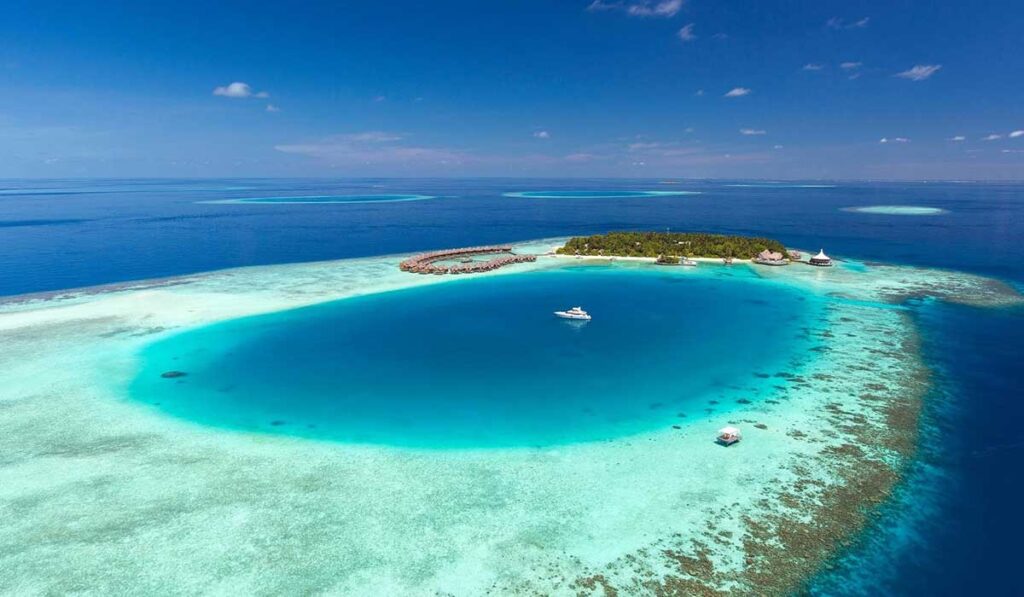Maldives travel tips
Category
Categories
Popular Articles

Overview of the Destination: Maldives
The Maldives is a tropical paradise in the Indian Ocean, famous for its stunning white sandy beaches, crystal clear waters, and abundant marine life. Composed of 26 atolls, which are made up of more than 1,000 coral islands, it’s known for its luxurious resorts, world-class diving and snorkeling, and vibrant underwater ecosystems. With a rich cultural heritage and natural beauty like nowhere else on Earth, the Maldives is worth visiting for the unique island experience it offers.
Best Time to Visit: Your Maldives Calendar
The peak season in the Maldives is from November to April when the weather is dry, and the sun is always out. Visitors may experience a rise in prices during December and January due to high demand. The Maldives is a year-round destination, so travelers who prefer fewer crowds can visit during the off-season, from May to October. Although it’s the rainy season, showers are usually brief and are quickly followed by sunshine. Also, from June to November, it’s manta ray and whale shark season, which is fabulous for divers.
Climate & What to Pack: Dressing for the Maldives
The Maldives is a tropical country with a year-round temperature of around 26-30 degrees Celsius or 79-86 degrees Fahrenheit. It would be wise to pack lightweight clothing, swimwear, a hat, sunglasses, and a lot of sunscreens. As it’s a Muslim country, respect the local culture by dressing modestly when visiting local islands. Pack a sarong or cover-up for these instances. Reef shoes and a good underwater camera will come in handy for your underwater adventures!
Getting There: Traveling to the Maldives
The main international airport in the Maldives is Male International Airport. Flights frequently connect from hubs like Dubai, Singapore, and Istanbul. From the airport, transfer to your resort island is usually by speedboat or seaplane and typically arranged by your resort. Most nationalities receive a free 30-day visa upon arrival, but check the latest visa policies before your trip.
Getting Around Locally: Navigating the Islands
In the Maldives, the common modes of transport are boats, seaplanes, or walking if you’re on a small island. Public ferries are a cost-effective way of getting between islands, while speedboats and seaplanes are faster but more expensive. Renting a car or scooter isn’t practical due to the geography of the Maldives. Taxis are available in Male city but generally aren’t needed on resort islands.
Safety Tips: Protecting Yourself in Paradise
The Maldives is generally a safe destination, though it’s always important to take standard precautions. Be mindful of the undercurrent when swimming or snorkeling, always apply sunscreen, and stay hydrated. Ensure your travel insurance covers any diving or water sports activities you plan on doing. Alcohol is prohibited outside of resort islands, so be aware of this cultural expectation.
Top Things to Do & See: Must-Dos in the Maldives
The Maldives is famous for its underwater world. Don’t miss out on snorkeling or diving at spots like Banana Reef and Manta Point. Partake in water sports, fishing trips, or island hopping to local islands to experience Maldivian life. Visit the glowing beach on Vaadhoo Island at night or relax at one of the many luxury spas available. Male, the capital, offers attractions like the 17th-century Hukuru Miskiy mosque and the Maldives National Museum.
Where to Stay: Accommodations in the Maldives
From ultra-luxury resorts and water villas to budget guesthouses, the Maldives caters to a range of travel budgets. Luxury resorts like the Conrad Maldives or Soneva Fushi offer world-class amenities and unparalleled privacy. Mid-range options can be found on local islands like Maafushi or Thulusdhoo. For budget travelers, guesthouses or Airbnb options provide decent lodging at affordable prices.
Food & Local Cuisine: Delicacies of the Maldives
Maldivian cuisine is heavily based on three items: coconuts, fish, and starches. Try “Mas Huni” (shredded smoked fish with grated coconuts and onions) for breakfast and “Garudhiya” (a fish broth served with rice) for lunch. “Bis Keemiya” is a popular street snack – a spring roll-like pastry filled with sautéed cabbage, hard-boiled eggs, and spiced onions. There are plenty of dining options available on resort islands ranging from fine-dining restaurants to beachside BBQs.
Cultural & Practical Tips: Things to Keep in Mind
The Maldives uses the Maldivian Rufiyaa (MVR), but US dollars are widely accepted, especially on resort islands. English is widely spoken in tourist areas, but trying out some Dhivehi phrases would be appreciated. Tipping is not mandatory but is a common practice. Electricity sockets are type D and G, and the standard voltage is 220V. Wi-Fi is readily available in most resorts and guesthouses.
Sustainable or Responsible Travel Tips: Respecting the Maldives
Refrain from touching or standing on corals, and don’t take any seashells, sand, or coral as souvenirs, as coral is a protected species. Follow the lead of your resort in terms of responsible water and waste management, as fresh water is precious in the Maldives and waste management is an ongoing issue. Use reef-friendly sunscreen to protect the marine environment.
Personal Travel Tip
For an unforgettable experience, take a nighttime dive to see the bioluminescent plankton light up the waters around you! No photo can truly capture this magical experience in the Maldives. Enjoy your time in this tropical paradise but, most importantly, respect its culture, people, and the environment.










